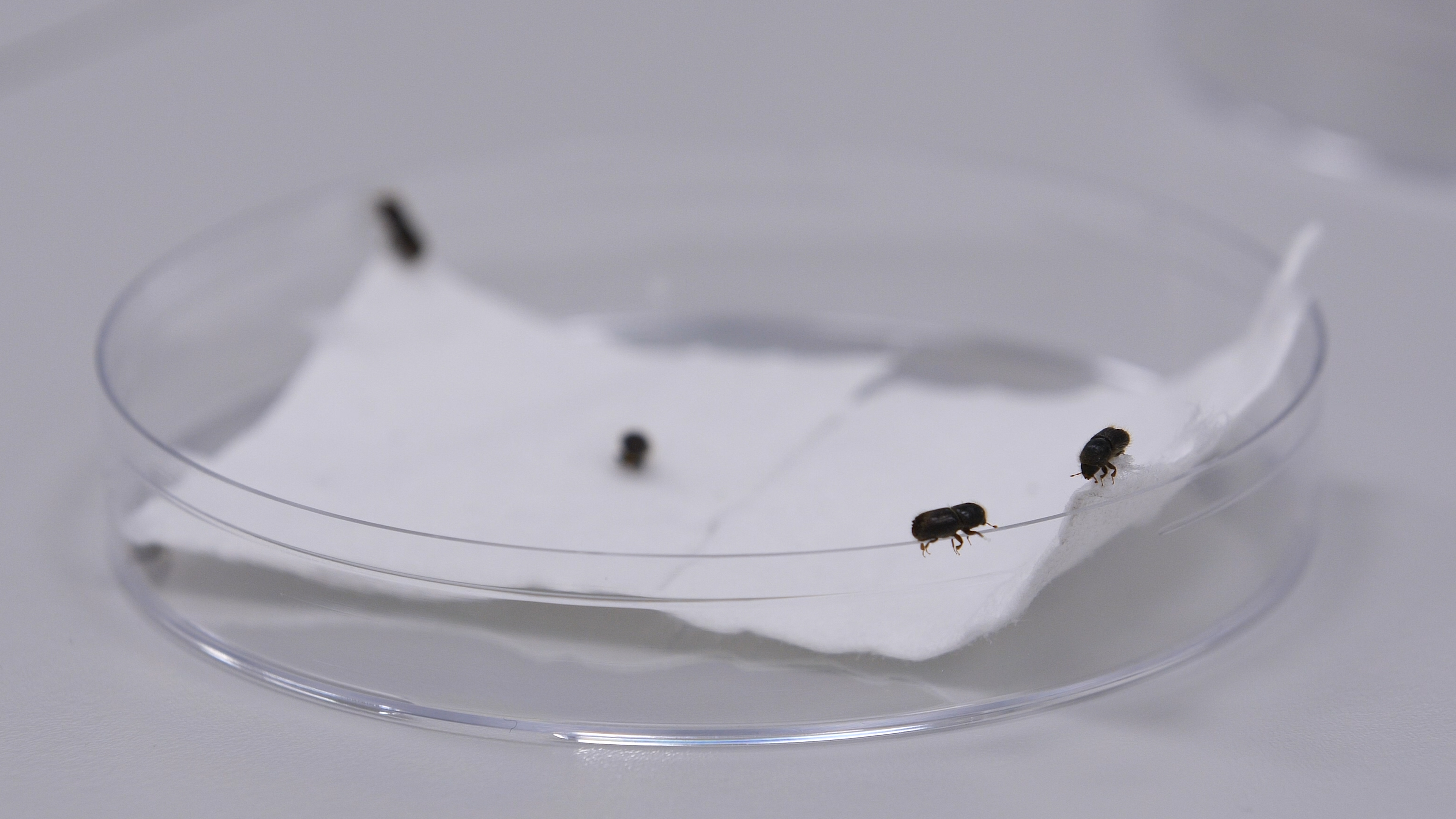The Euroasian spruce bark beetles (Ips typographus), can destroy millions of cubic meters of spruce forest. Its ability to attack living trees is based on an effective cooperation of hundreds to thousands of beetles and their ability to focus their murderous invasion on one or few selected host trees. Such collaboration is mediated by highly efficient aggregation pheromone released by successful colonizers and attracts others to join the colonization. The aggregation pheromone is a mixture of two volatile substances created in the gut of males boring under the bark and released into the environment from their tunnels. The production of pheromone is conrolled by specific genes, identity of which we discovered. This knowledge will allow to study regulation of pheromone production on molecular level and opens a possibilities for development of new efficient control methods. For example, gene identification provides a possibility for a highly specific intervention using RNA interference to suppress the pheromone production. Inhibition of pheromone production will have a devastating effect on beetles ability to colonize living trees. Less pheromone would attract less beetles, and fewer beetles would have less or no chance to overcome the defenses of the living trees.
You can find the link to the whole article here.


